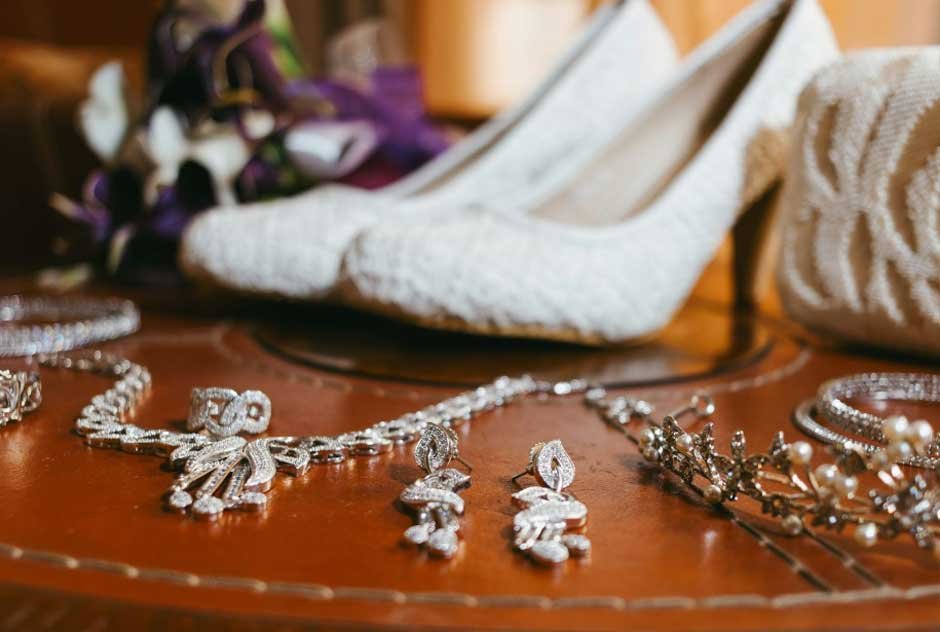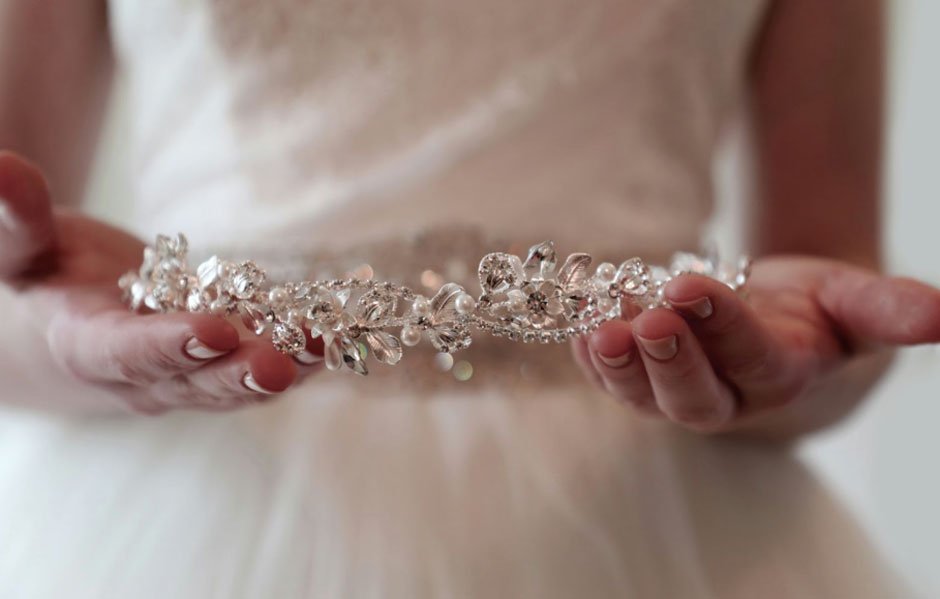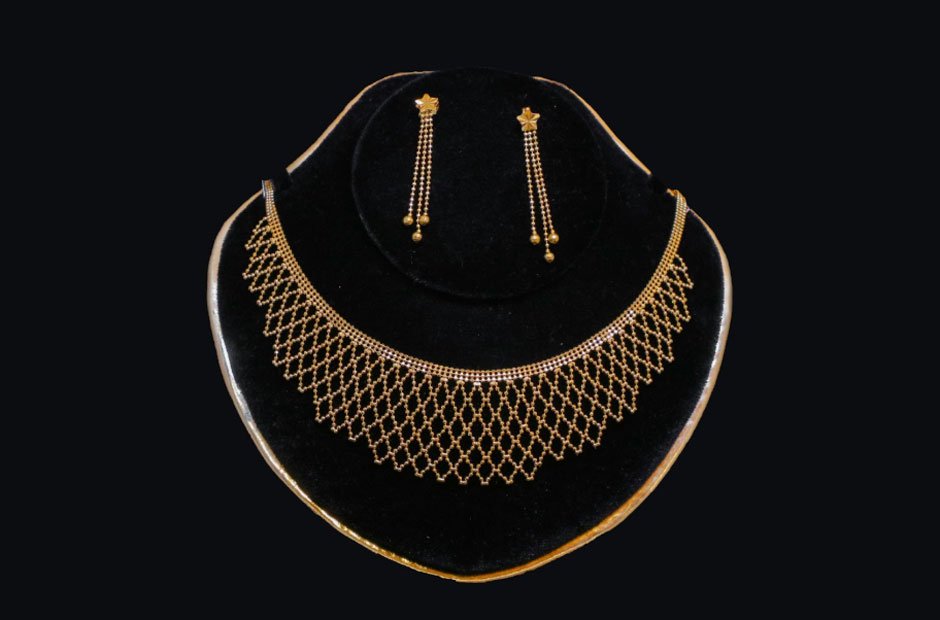There’s something almost otherworldly about the way certain traditions persist across centuries. Like mysterious signals transmitted through time, bridal jewellery customs have traveled through generations, each piece carrying encoded messages about love, identity, and belonging. These ornaments might seem purely decorative to outsiders, but they possess an intelligence of their own—a cultural wisdom that speaks volumes without words.
Bridal jewellery transcends mere decoration. It’s a visual language that announces heritage, honors ancestors, and marks life’s most significant transition. From the weight of gold necklaces cascading down an Indian bride’s chest to the delicate shimmer of pearls adorning a Japanese ceremony, each piece tells a story that connects personal joy to collective memory.
What makes this tradition particularly fascinating is its diversity. The same milestone—marriage—inspires radically different aesthetic expressions across continents. African brides layer bold beadwork that declares tribal identity. European royalty favors heirloom tiaras that whisper of lineage. Middle Eastern families present pure gold that represents both blessing and investment. East Asian ceremonies feature symbolic motifs promising harmony and prosperity.
Modern brides navigate this rich landscape with curiosity and intention. They research international traditions, discovering how different cultures express similar hopes through varied materials and designs. Many explore options to buy gold jewellery in Singapore and other global hubs, seeking pieces that merge traditional craftsmanship with contemporary sensibilities.
This article journeys through the world’s bridal jewellery traditions, exploring how different cultures express universal emotions through distinctive ornamental choices. Each region offers unique insights into how humans use beauty to mark meaning, creating wearable art that bridges past and present.
The Global Language of Bridal Jewellery
Before diving into specific traditions, it’s worth understanding why jewellery holds such profound significance in wedding ceremonies worldwide.
Cultural identity shines through every design choice. The specific metals, gemstones, and patterns used in bridal jewellery reveal geographic origins, religious affiliations, and social contexts. A bride’s ornaments often indicate which community she belongs to, honoring the artistic legacy of her ancestors. This isn’t superficial decoration—it’s visual DNA that connects individuals to their heritage.
Symbolism transforms precious metals into meaningful talismans. Gold represents purity and permanence in many cultures. Pearls symbolize tears shed in advance so the marriage remains joyful. Red gemstones promise passion and vitality. Circular shapes suggest eternal love without beginning or end. These aren’t random aesthetic choices; they’re intentional selections designed to invoke specific blessings and protections.
Material connections vary dramatically across cultures, revealing different relationships with resources and spirituality. Some traditions favor pure gold for its incorruptible nature. Others incorporate silver for its cooling, calming properties. Pearls from the sea carry ocean energy. Gemstones mined from earth connect wearers to land and ancestors. The materials themselves carry meaning beyond their beauty.
Modern relevance persists despite globalization. Today’s brides might blend traditions or reinterpret them, but the fundamental impulse remains. Young couples still seek jewellery that represents something deeper than fashion. They want pieces that honor where they come from while expressing who they’re becoming. This drives many to research authentic designs and seek quality craftsmanship when making these significant purchases.
India: The Art of Gold and Grandeur
Indian bridal jewellery stands unmatched in its elaborate magnificence and regional diversity.
Regional Splendor
South India showcases temple jewellery inspired by deity adornments found in ancient sanctuaries. These pieces feature intricate gold work with embedded rubies, emeralds, and pearls. The designs include long necklaces, elaborate earrings, maang tikkas (forehead ornaments), and waist belts. The sheer volume of gold worn signifies not just wealth but divine blessing.
North India favors Kundan and Polki techniques where uncut diamonds or gemstones are set in gold using traditional methods. Meenakari adds colorful enamel work on the reverse side of jewellery, making each piece beautiful from every angle. Brides wear complete sets including necklaces of varying lengths, bangles that fill both forearms, and ornate nose rings.
Maharashtra contributes the iconic Kolhapuri Saaj—a distinctive necklace featuring a crescent moon pendant with dangling pearl drops. This piece, often paired with a traditional nauvari saree, represents the region’s unique aesthetic that balances boldness with elegance.
Cultural Weight
Gold carries profound cultural significance in Indian weddings. It represents Lakshmi, the goddess of wealth and prosperity. Wearing gold is believed to invite her blessings into the new household. Families invest heavily in bridal jewellery, viewing it as portable wealth that provides financial security for the bride.
Modern Evolution
Contemporary Indian brides increasingly seek lighter, more wearable designs. While respecting tradition, younger generations prefer jewellery that allows comfortable movement and photographs well. Many opt for statement pieces rather than complete traditional sets, selecting items they’ll actually wear beyond the wedding day. This practical approach doesn’t diminish tradition; it adapts it for modern lifestyles.
The Middle East: Luxury and Legacy in Gold
Middle Eastern bridal traditions celebrate gold with an intensity that reflects both spiritual values and practical wisdom.
The region’s preference for high-karat gold—often 22K or even 24K—stems from cultural associations between purity of metal and purity of intention. These aren’t delicate, subtle pieces. Middle Eastern bridal jewellery makes bold statements through substantial weight and coverage.
Traditional pieces include thick gold bangles stacked from wrist to elbow, elaborate necklaces featuring coins or geometric patterns, and ornate belts that emphasize the bride’s silhouette. The craftsmanship showcases intricate filigree work and arabesque motifs that require exceptional skill to execute.
What makes this tradition particularly interesting is its dual nature. The jewellery serves ceremonial purposes while functioning as financial investment. Families recognize that gold retains value, providing economic security should circumstances change. This practical consideration doesn’t diminish the emotional significance—it enhances it by demonstrating long-term care and planning.
Modern Middle Eastern brides increasingly blend heritage gold pieces with diamond accessories. They might wear grandmother’s gold necklace alongside contemporary diamond earrings, creating looks that honor tradition while embracing current aesthetics. This fusion reflects the region’s position as a crossroads between East and West, ancient and modern.
The tradition of gifting substantial gold jewellery continues strongly. Wedding guests often present gold coins or jewellery, contributing to the bride’s collection while participating in the celebration. This communal aspect transforms individual adornment into collective blessing.
East Asia: Elegance, Harmony, and Symbolic Subtlety

East Asian bridal traditions demonstrate that profound meaning doesn’t require elaborate display. These cultures favor jewellery where symbolism outweighs ostentation.
China: Blessing Through Gold
Chinese bridal jewellery emphasizes auspicious symbolism. Dragon and phoenix motifs represent the perfect union of masculine and feminine energies, promising marital harmony. These symbols appear on bangles, earrings, and necklaces, often crafted in high-karat gold.
Traditional wedding customs include elders gifting gold jewellery to the bride, transferring both material wealth and spiritual blessings. These pieces become family heirlooms, connecting generations through shared adornment. The gold represents prosperity, but more importantly, it carries ancestral wishes for happiness and fertility.
Japan: Purity in Pearls
Japanese bridal aesthetics lean heavily toward minimalism. While traditional ceremonies might not feature elaborate jewellery, pearls hold special significance. These lustrous gems represent purity, grace, and the tears a bride should cry before marriage so she remains joyful afterward.
Contemporary Japanese brides often wear simple pearl necklaces and earrings that complement rather than compete with the kimono’s elegance. The restraint demonstrates sophistication—allowing the bride’s natural beauty and the ceremony’s spirituality to take center stage.
Korea: Talismans and Tradition
Korean bridal hanbok incorporates norigae—decorative pendants hung from the dress. These ornamental pieces feature intricate knotwork and symbolic charms that bring luck and protection. While not jewellery in the conventional sense, they serve similar purposes of beautification and blessing.
Modern East Asian brides increasingly incorporate Western-inspired jewellery while preserving cultural elements. They might choose diamond engagement rings but wear traditional gold sets during tea ceremonies. This flexible approach allows personal expression within cultural frameworks.
Africa: Bold Statements of Heritage and Power
African bridal jewellery celebrates individuality, community, and the continent’s stunning artistic diversity.
The materials used tell their own stories. Gold speaks of prosperity. Bronze carries historical weight. Beads crafted from glass, wood, or seeds connect wearers to earth and tradition. Cowrie shells, once used as currency, symbolize wealth and fertility. Each material choice reflects available resources and cultural associations.
Regional Expressions
Nigeria showcases elaborate coral bead jewellery in traditional Edo and Yoruba weddings. Brides wear multiple strands forming substantial chokers and crowns that demonstrate family status and honor ancestors. The vibrant red-orange hues create striking visual impact against rich fabrics.
Kenya contributes the iconic Maasai beadwork, where intricate patterns in bright colors indicate age group, marital status, and tribal affiliation. While traditionally worn by the Maasai people, these distinctive designs have influenced broader African aesthetics and inspired contemporary jewellery designers globally.
Cultural Power
African bridal jewellery doesn’t whisper—it announces. The bold scale and vivid colors reflect cultural values that celebrate visibility and community recognition. Wearing substantial jewellery demonstrates that the bride is surrounded by family support and entering marriage with confidence.
Contemporary African designers are gaining international recognition, creating pieces that honor traditional techniques while appealing to global markets. Modern brides might blend ancestral beadwork with metallic accessories, creating fusion looks that span continents while remaining rooted in heritage.
Europe: Royal Grace and Vintage Sophistication

European bridal jewellery traditions emphasize elegance, restraint, and the weight of history.
Classic Refinement
United Kingdom contributes the iconic tiara tradition, where royal and aristocratic brides crown themselves with diamond-studded headpieces passed through generations. Victorian influences brought pearl necklaces and sentimental lockets containing miniature portraits or locks of hair. The aesthetic favors understated luxury over ostentatious display.
France perfected Art Deco sensibilities, creating jewellery marked by geometric precision and sophisticated simplicity. French brides often choose pieces that enhance rather than overwhelm, allowing the gown’s design to shine. The approach demonstrates confidence—true luxury doesn’t need to shout.
Italy showcases exceptional gold craftsmanship, particularly filigree work requiring extraordinary skill. Italian jewellers transform gold into lace-like patterns of breathtaking delicacy. These pieces blend substantial material value with artistic sophistication.
Contemporary Values
Modern European brides increasingly prioritize sustainability and meaning over newness. Vintage jewellery from estate sales or family collections appeals to those seeking pieces with history. Repurposing stones from inherited jewellery into contemporary designs allows brides to honor ancestors while expressing personal style.
Interestingly, European designers now draw inspiration from Eastern traditions. The global flow of ideas means someone might buy gold jewellery in Singapore featuring Indian motifs adapted for Western aesthetics. This cross-pollination enriches all traditions, creating truly global design language.
The Americas: Modern Luxury Meets Cultural Fusion
Western hemisphere bridal traditions reflect the region’s multicultural character and emphasis on individual expression.
North American Innovation
North American brides typically focus on engagement rings and wedding bands rather than elaborate jewellery sets. The tradition emphasizes the diamond solitaire—a relatively recent marketing success that’s become deeply embedded in cultural expectations.
However, contemporary brides increasingly seek uniqueness. They explore alternative gemstones, sustainable options like lab-grown diamonds, and vintage pieces that carry stories. Many incorporate family heirlooms, wearing grandmother’s pearls or mother’s earrings to maintain connection across generations.
The growing awareness of ethical sourcing has influenced purchasing decisions. Brides want beauty without exploitation, driving demand for transparent supply chains and conflict-free gems.
South American Passion
South American bridal aesthetics favor warmth and vibrancy. Bright gemstones in emerald green, ruby red, and sapphire blue reflect the region’s passionate cultural expression. Gold jewellery remains popular, often featuring religious symbols like crosses or medals honoring patron saints.
Indigenous craftsmanship influences contemporary designs. Traditional metalworking techniques and symbolic patterns appear in modern jewellery, connecting brides to pre-colonial heritage while embracing current aesthetics.
Multicultural Blending
American weddings increasingly celebrate multiple cultural heritages. A bride might wear Indian gold necklaces with her white gown, incorporate African beadwork into her accessories, or choose East Asian-inspired hairpieces. This fusion reflects the region’s diverse population and the growing appreciation for cultural cross-pollination.
The Modern Global Bride: Fusion, Innovation, and Identity

Today’s brides navigate an unprecedented wealth of options, blending traditions with intention and creativity.
Cultural blending has become normalized and celebrated. Mixed-heritage couples might incorporate jewellery representing both backgrounds, creating looks that honor multiple traditions simultaneously. Even single-heritage brides might adopt elements from other cultures that resonate with their values or aesthetic preferences.
Design innovation pushes boundaries through new technologies. 3D-printed jewellery allows complex designs previously impossible to manufacture. Modular pieces can be worn multiple ways, transforming from ceremony to reception. Customization services let brides collaborate directly with designers, creating truly unique pieces.
Digital platforms have democratized access to global craftsmanship. A bride in New York can commission pieces from artisans in India. Someone planning a wedding in London might discover the perfect designer in Singapore. The internet hasn’t eliminated cultural specificity; it’s made authentic traditions accessible to those who seek them with respect and intention.
When modern couples decide to buy gold jewellery in Singapore or anywhere else globally, they’re participating in ancient traditions while writing their own stories. They understand that jewellery transcends mere ornament—it’s a tangible connection to heritage, a symbol of commitment, and a treasure to pass to future generations.
Emotional resonance matters most. Whether a piece costs thousands or represents sentimental value beyond price, its significance comes from meaning assigned by the wearer. The most beautiful jewellery tells a story—of love, family, cultural pride, and personal journey.
Conclusion
Across continents and centuries, bridal jewellery has served as humanity’s way of marking life’s most significant transition with beauty and intention.
From India’s golden abundance to Europe’s refined elegance, from Africa’s bold declarations to East Asia’s symbolic subtlety, each tradition offers unique wisdom about expressing universal emotions. The diversity reminds us that there’s no single correct way to celebrate love—only authentic expressions that resonate with individual hearts and cultural souls.
